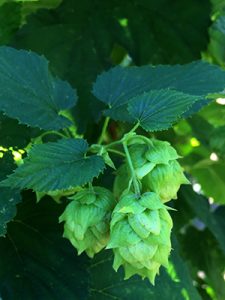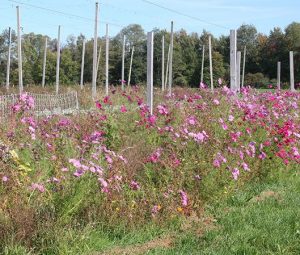Sometimes on a snowy evening there’s fine company to be had with good friends and a six-pack from your local brewery. So settle back and take a moment to savor what it took to get you there.

Long ago yet close to home — the mid 19th through the early 20th centuries — New York led the world in hops production. Back then, we supplied that critical beer ingredient for breweries worldwide. But then two new and dastardly fungal diseases blew in and put an end to all that.
Now it’s déjà-vu all over again. With microbreweries and tasting rooms on the upswing, hop yards are too.
Yes, hops can be prey to the usual range of pests lurking in the soil or pathogens drifting in on the wind. But with Cornell’s IPM research there to support farmers, it’s different this time around. Today’s growers have a clear advantage that yesteryear’s famers sorely lacked — detailed production guides that cover a range of new techniques and research on biological and ecological IPM tactics unknown a century ago. Example? Flowering cover crops that not only suppress weeds but serve as a nectary to attract and retain the beneficial insects that keep pests under control.

Of course there’s more — much more — and IPM’s presence at the Cornell Lake Erie Research and Extension Laboratory contributes to careful research now published in the Cornell Integrated Hops Production Guide and available to farmers throughout New York and the Northeast. Let’s raise a glass to the growers and researchers who have made this possible.
Contact NYSIPM educator Tim Weigle at thw4@cornell.edu for more info on this project. Learn more about hops production at Cornell University’s School of Integrative Plant Science. Cornell also has a strong presence at the Northeast Hops Alliance.